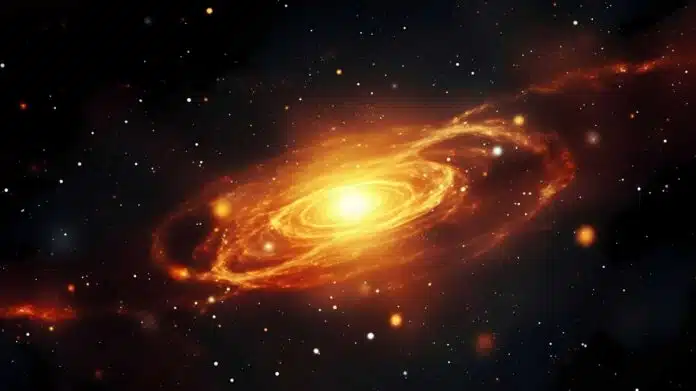
By Amit Malewar 23 Aug, 2024
Collected at: https://www.techexplorist.com/study-sheds-light-origin-low-frequency-gravitational-waves/88324/
In 2023, a specific type of nanohertz gravitational wave was identified. However, the origin of such waves remains unclear.
Some scientists believe they came from a first-order phase transition—a change in the universe’s structure as it expands and cools down. But a new study challenges that theory.
Theorists and experimentalists have suggested that these nanohertz gravitational waves—low-frequency gravitational waves—originated from a known transition that happened very soon after the Big Bang.
This transition also generated the masses of all the known fundamental particles.
But there’s a twist!
The study highlights problems with this appealing explanation.
Dr. Andrew Fowlie, an Assistant Professor at Xi’an Jiaotong-Liverpool University in China, said, “We found that to have created waves with such tiny frequencies, the transition would have to be supercooled.”
These slow transitions would be difficult to complete because they happen more slowly than the universe is expanding. Hence, the research team believes that nanohertz gravitational waves are not produced by supercooled first-order phase transitions.
If the transition sped up at the end, it might complete faster, but it would also change the frequency of the waves away from nanohertz. Even though nanohertz gravitational waves are excellent, they might not be caused by supercool processes.
If these waves originated from first-order phase transitions, scientists must discover new, unknown physics to explain them.
The study results highlight that studying supercool transitions requires more careful analysis. Because of their slow nature, simple methods to determine if they are complete aren’t effective.
The relationship between the energy scale of the transitions and the wave frequency is complex; hence, more advanced techniques are needed to study gravitational waves and supercool transitions properly.
Dr Fowlie said, “Understanding this field will help us understand the most fundamental questions about the universe’s origin. It also links to applications closer to home, such as understanding how water flows through a rock, the best ways to percolate coffee, and how wildfires spread.”
Journal Reference:
- Peter Athron, Andrew Fowlie, Chih-Ting Lu, Lachlan Morris, Lei Wu, Yongcheng Wu, and Zhongxiu Xu. Can Supercooled Phase Transitions Explain the Gravitational Wave Background Observed by Pulsar Timing Arrays? Physical Review Letters. DOI: 10.1103/PhysRevLett.132.221001

Leave a Reply